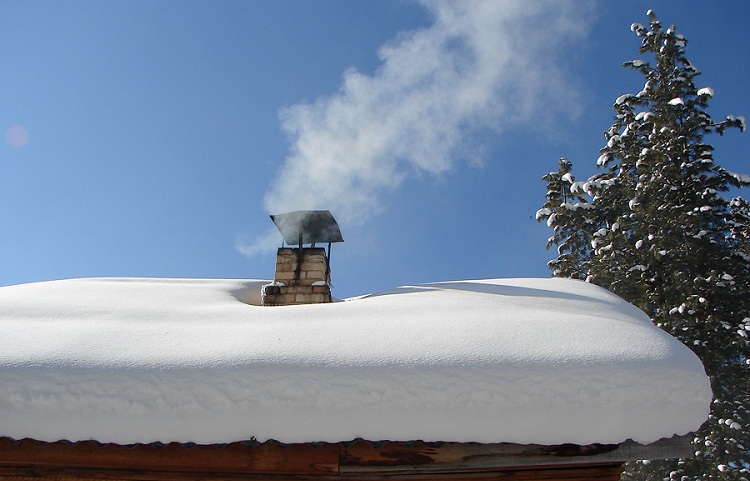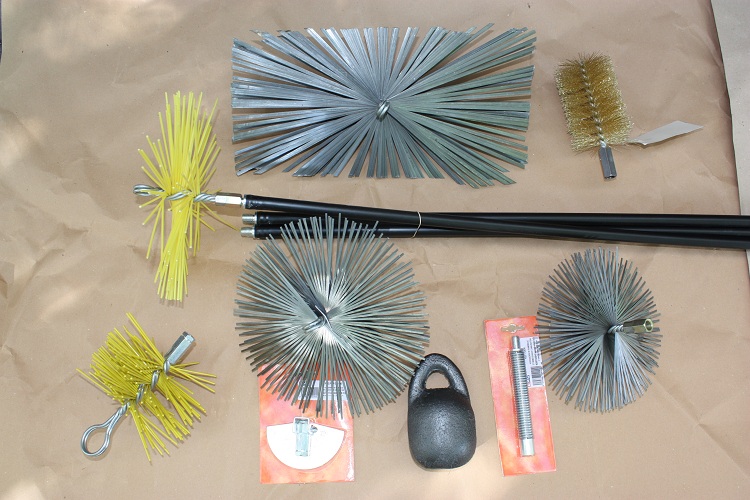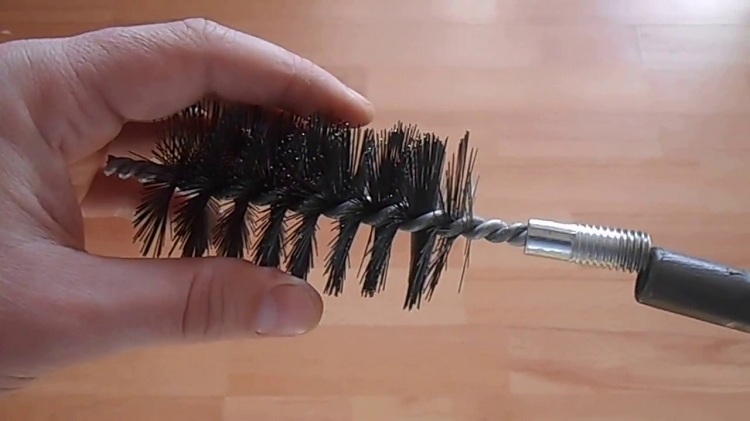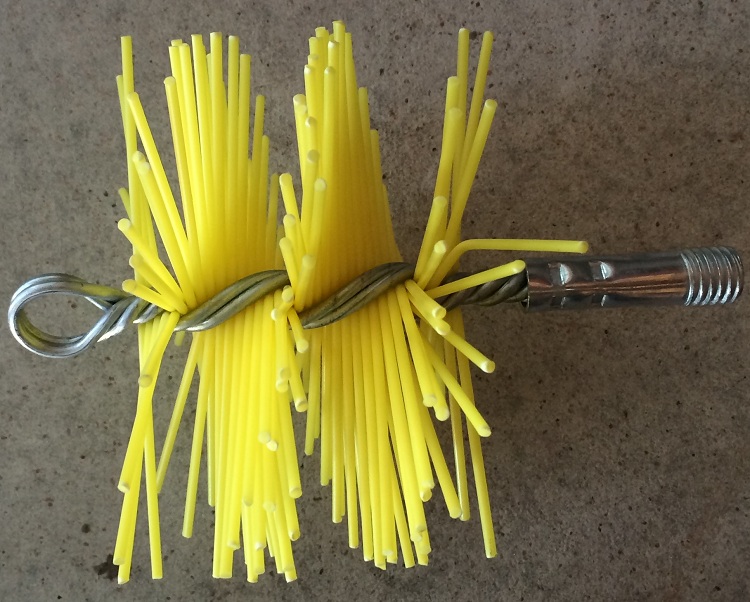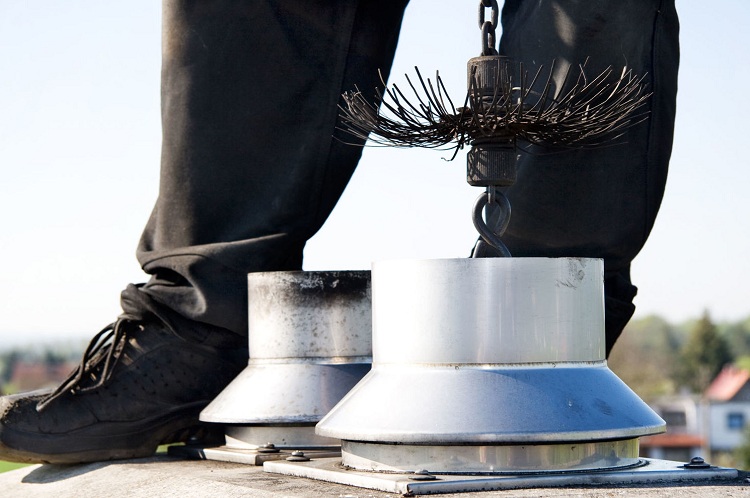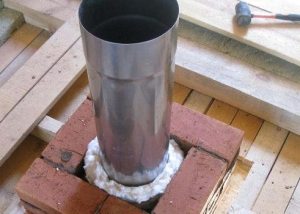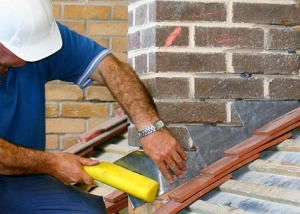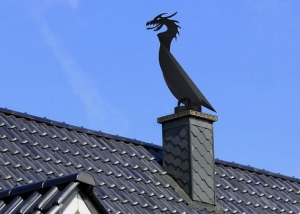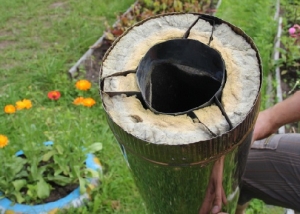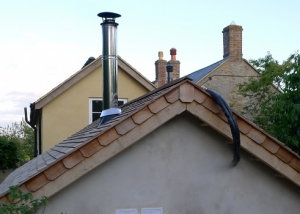Fireplaces, stoves and other heating units emit a large amount of soot after burning coal or firewood. She settles on the walls of the chimney pipe. The accumulation of soot deposits causes serious problems that can become dangerous for the inhabitants of the dwelling. Chimney brush, modern chemical products manufactured by industry and popular advice allow you to clean the chimney system pipe quickly and efficiently.
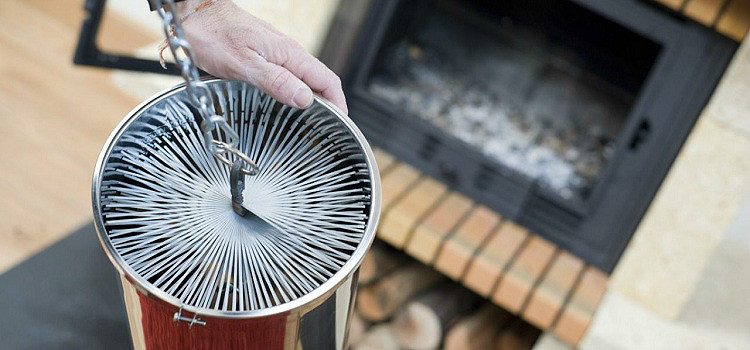
The chimney system of any stove, fireplace or boiler requires regular cleaning and you can do this procedure with a special design brush
Content
Signs of clogging and effects
Clean the stove or fireplace pipe regularly. Moreover, the frequency of these works, according to experts, should be at least once for several months. The maximum time interval between such events is no more than six months. This applies to any pipes - steel, ceramic, brick and all others.
Of course, procrastination is uncritical. Some stoves and fireplaces live longer without cleaning. But a clogged chimney always gives the owner certain troubles. The chimney system produces an unpleasant odor, and due to weakening traction, the flame in the fireplace becomes weaker, it can even change color, and the fireplace itself smokes more. And everything would be fine if you did not take into account the fact of the partial settling of carbon monoxide inside the room due to the irregular cleaning of the chimney. After all, the absence of normal traction does not allow this chemical compound to be completely brought out. The root of the problem lies in the fact that carbon monoxide is invisible and almost odorless. But it affects human health adversely and quickly enough.
The most powerful argument in favor of regular cleaning of chimneys is formulated as follows: at one “fine” moment, the smoke can literally tumble into the room due to the strong blockage of the chimney system. In this case, everything and everything will be smoked.
And only the replacement of some things and furniture cleaning will help to eliminate the consequences, but the need for a thorough repair is not ruled out. This business cannot be called cheap. Regular chimney cleaning requires less material costs.
What tool to use
Clogging of pipes is a consequence of the gradual deposition of products of the combustion process on their walls. After all, smoke is not only gas. It contains light elements, small particles of ash and so on. They constantly settle on the inner surface of the chimney system pipes, and do their job, albeit slowly, but surely.
In the end, the chimney cavity becomes clogged to such an extent that the draft is significantly weakened. But this is only the first stage. Then there is a layering in certain places of burning.
On a note! Hard plugs are removed much more difficult, and more problems arise from them. As a result, cleaning will require considerable labor.
But after all, the chimney pipes, looking in the form of long sections, still need to be approached somehow. This is done using a ruff to clean the chimney. The effectiveness of this simple tool is time-tested.
Ruff, or a folk brush, consists of:
- metal tubes or cable;
- core or hook for weighting;
- heads;
- additional nozzles.
In most cases, the presence of tubes or cable is necessary. They provide an opportunity for the performer to control the movement of the instrument. The brush can be lowered to the required depth, break through the blockage, moving the tool translationally, and move on. In the process of cleaning, the length of the pipes does not matter. The success of the event depends only on the length of the cable. This accessory can be metal wire, spring, but you can find samples woven from plastic hard threads.
In the presence of numerous solid deposits, a more preferable option is to use a metal ruff for cleaning pipes made of one or several pipes. Indeed, it is much easier for a person to operate a rigid pipe, since the shoulder of the application of force is strengthened and, therefore, the growths are removed more efficiently. The deterioration of mobility is the flip side of the coin. Even a relatively short device takes up more space and is more difficult to transport.
The main working element of the ruff for cleaning pipes is a head made of hard wire. The wire is specially wound in such a way that its parts are directed in different directions. You can also find an embodiment when not wire is used, but plastic elements or something similar. Sometimes in homemade ruffs, heads are often made from pieces of plastic bottles.
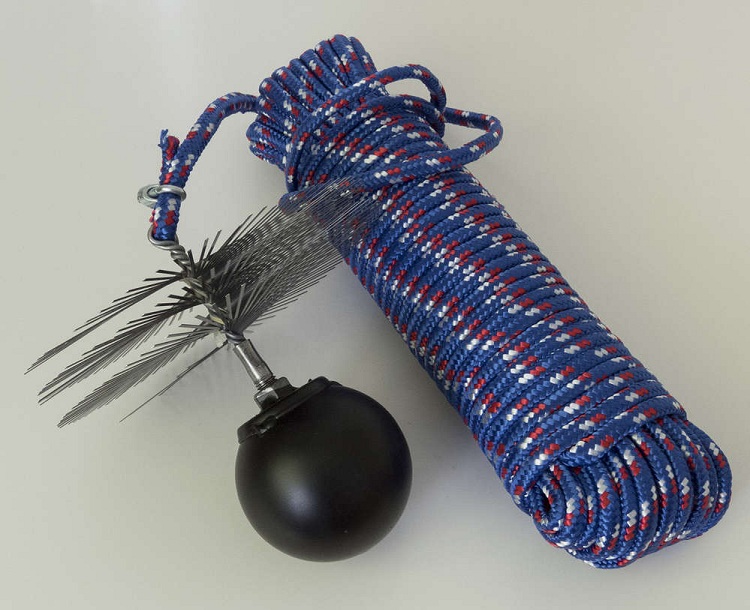
A load is necessarily suspended from the brush, which contributes to the destruction of the solid plug in the pipe
The nozzle of the device is mounted at a distance of 10-15 centimeters from the edge of the cable, and not directly on the edge. A special hook is attached to the end itself. This accessory is used for hanging the weighting compound. As a result, the brush for cleaning chimneys turns into an analog of the core, capable of breaking through the blockage formed in the pipe with its weight.
We make a ruff for cleaning the chimney with our own hands
To do this, you must have at hand the following tools and supplies;
- a coil of wire. He will go on to create a cleaning nozzle. In the absence of wire, it is allowed to use a tread cord, after firing rubber;
- plumbing cable. This is the basis of the future chimney ruff. However, if it is planned to carry out work only with a vertical channel, then you can use a wire analog or a fine-mesh chain instead of a spring torso;
- a copper tube, two snap hooks, a steel stud with a diameter of 8-10 mm and two nuts;
- two tiles of metal or plywood with a thickness of 2 mm and a size of 5 × 5 cm;
- any small-sized cargo - cast lead blank, heavy nut. A coffee can filled with shot or sand is also suitable.
On a note! At home, the most preferred option is to equip the brushes with ordinary weight weights. They are compact in size, but weigh quite a lot.
The process of making a do-it-yourself brush for cleaning the chimney looks like this:
- at the point where the diagonals of 5-centimeter tiles intersect, a hole is drilled with a diameter the same as that of the stud;
- the wire or cord is cut into measuring sections with a length equal to 2-2.5 diameters of the chimney pipe;
- the pin is clamped in a vice. Its free end is bent into a loop, or washers are welded to it, the inner diameter of which exceeds the value of this parameter of the stud;
- then the pin in a vice is turned with its threaded end up. From this side the first nut is screwed and the first tile is put on;
- a ruff is formed by bending around the studs of measured sections of wire or cord in half. The bristles should be evenly spaced around the entire circumference.This will ensure maximum cleaning area;
- a second tile is put on the stud and a second nut is screwed on to fix the wire sticking out in different directions;
- at the free end of the pin a loop is made or a second washer is fixed there by welding;
- carabiner fasteners are passed into vertically fixed washers or loops. The result is a removable nozzle on the ruff for the chimney;
- the mounting ring is welded or soldered to the load. When a nut is used as a suspension, this operation can be omitted;
- a cargo is attached to one of the carbines of the manufactured nozzle;
- a copper tube is put on the free end of a wire or spring cable. Its diameter is 2-2.5 values of this parameter of the cable, and the length is within 4-5 centimeters;
- a loop is formed at the end of the cable by passing a free section into the tube;
- the copper pipe is riveted. This will fix the loop for hanging the nozzle with a small load;
- With the help of a free carabiner, the cleaning nozzle is fixed on the loop.
Using the above method, a brush is created to clean the vertical chimney. And to process inclined or horizontal channels, you will need another nozzle. Making it yourself is also very easy.
- Take one and a half - a two-liter plastic bottle and cut off the bottom of it.
- Dissolve the body of this tank into strips, cutting them to the neck from the distant bottom along the vertical axis. The width of the strips is 3-4 millimeters.
- Punch a hole in the cover, the diameter of which must be equal to the diameter of the cable.
- After that, it is necessary to string the perforated cover onto the cable and screw a bottle looking like a scraper onto it, after removing the “vertical” nozzle from the loop.
Advice! To ensure a firm fixation of the nozzle on the brush, pierce the cork and neck with a self-tapping screw, and pass it through the loop on the cable.
When manufacturing parts, consider the following points:
- the optimal diameter of the brush is approximately 0.8-1.2 of the diameter of the chimney pipe;
- the weight of the weight ranges from 0.3 ≤ Dvery good ≤ 0,35,
- where Doc. - diameter of the channel being cleaned;
- the length of the wire or spring cable is equal to the length of the channel being cleaned, plus 10-15%.
How to clean a chimney
Access to the chimney is only possible from the roof. Therefore, this work should be done with utmost care. It is recommended to use insurance and limiters. Other safety features will also not hurt, in fact, like the corresponding equipment. And in the snow or rain it is generally prohibited to work.
As for direct cleaning, this procedure is understandable and very simple. Professionals recommend using brushes in two ways:
- Traditional. Manipulations with this device are carried out using a cable.
- Apply as a piercing element.
In the first case, the sequence of stages of cleaning is as follows:
- we are preparing a tool;
- close all bends from the stove or fireplace;
- we climb onto the roof and fix on it;
- lower the brush inside the chimney pipe;
- we clean specific sections or the entire pipe;
- if necessary, repeat the procedure;
- we remove from the fireplace residual layers that have fallen down.
A more interesting option is cleaning with a weighting agent. It has already been said above that here the ruff plays the role of a nucleus. The weight of the weighting agent is calculated taking into account the degree of complexity of cleaning.
Ruff first lower into the chimney, and then throw. Due to the force of gravity, the force of its breakdown effect on blockages increases, and, as a result, they are destroyed, and then crumble. If this technique does not work the first time, the tool is lifted with a cable, after which they try again. The procedure is repeated until the desired result is achieved.
Spare money, effort and time to care for the chimney is not worth it, since this approach can cause serious consequences, up to the fire of the house.
